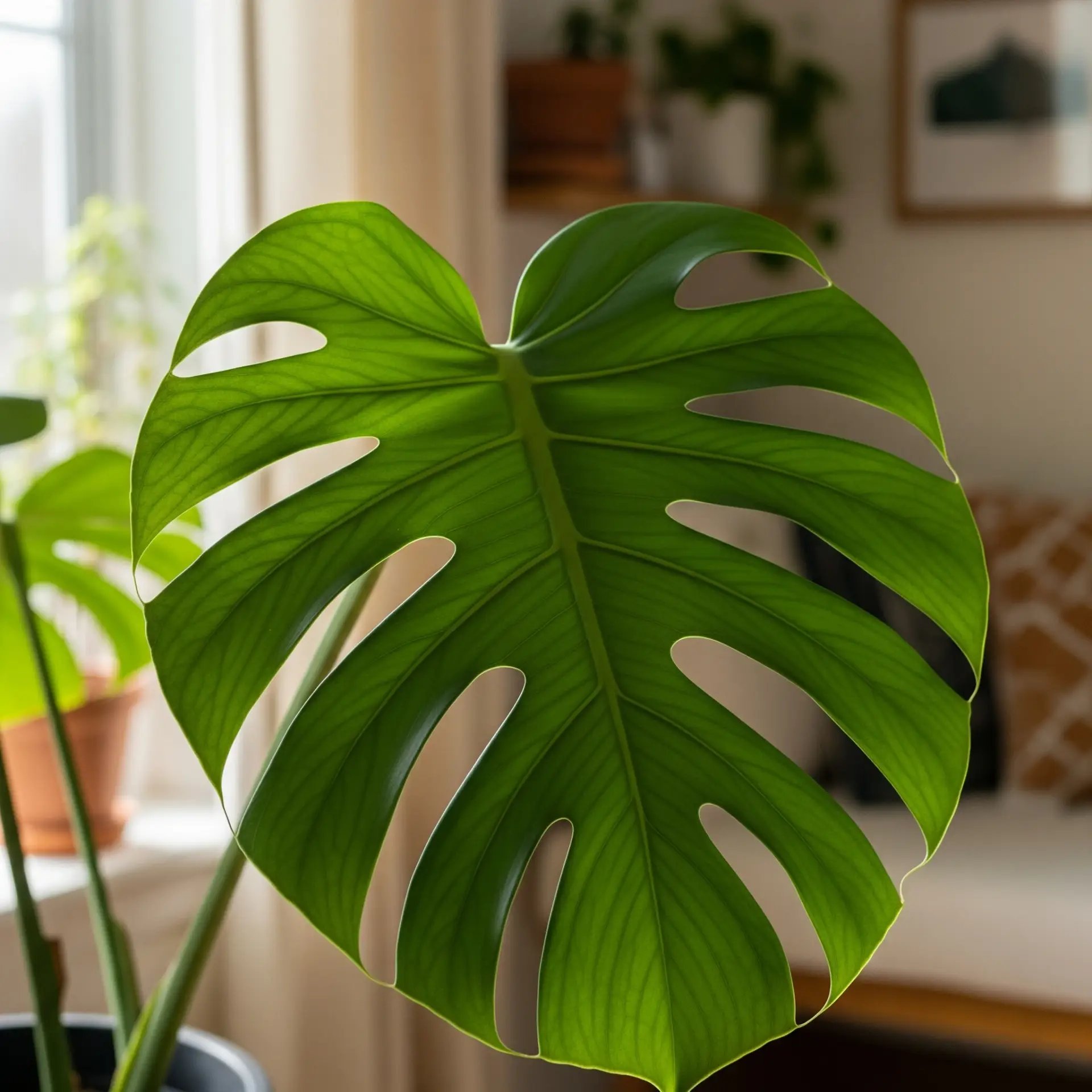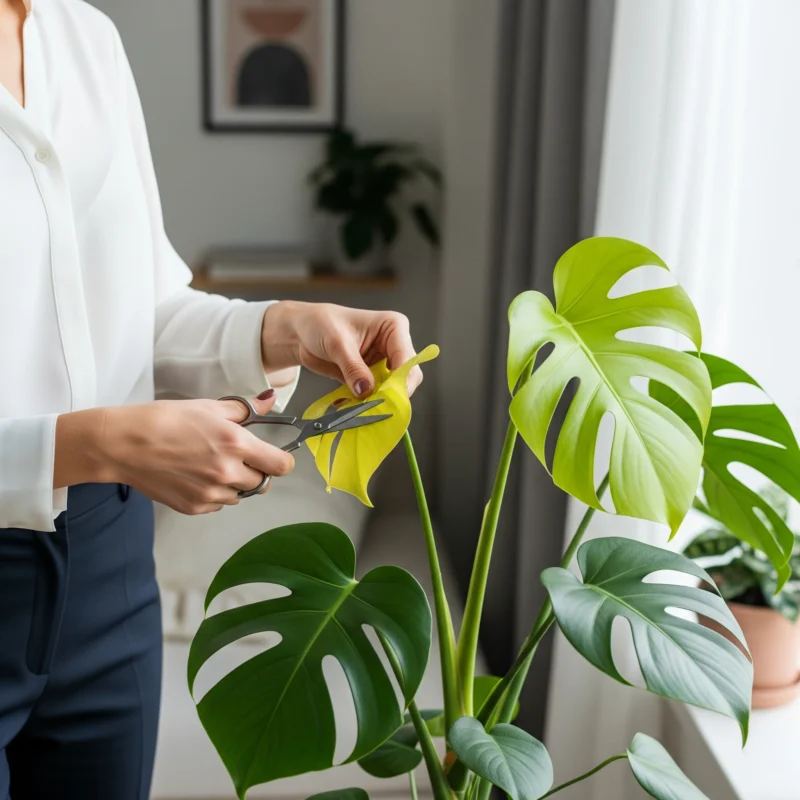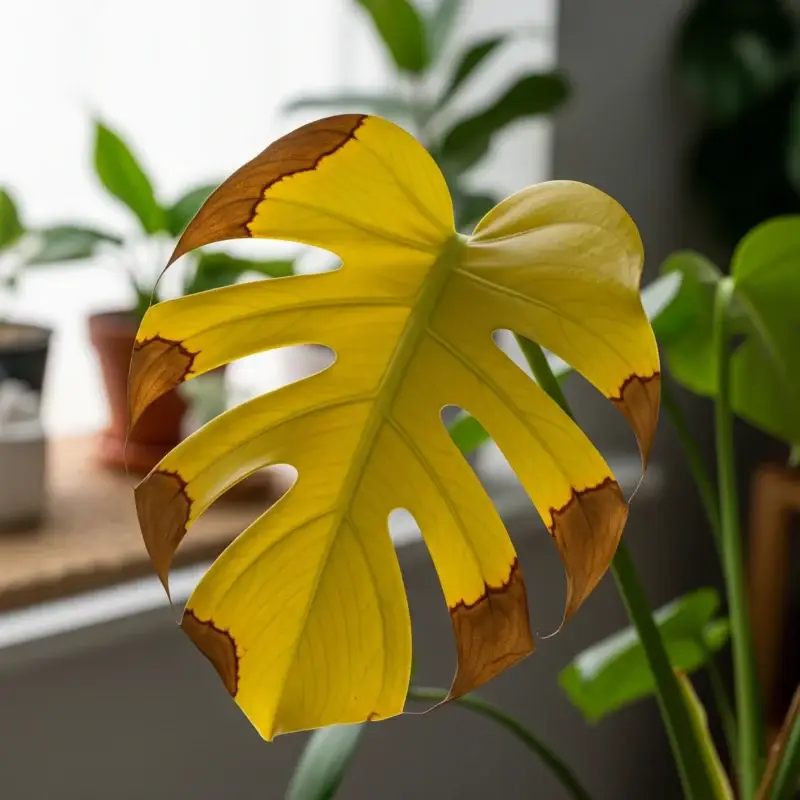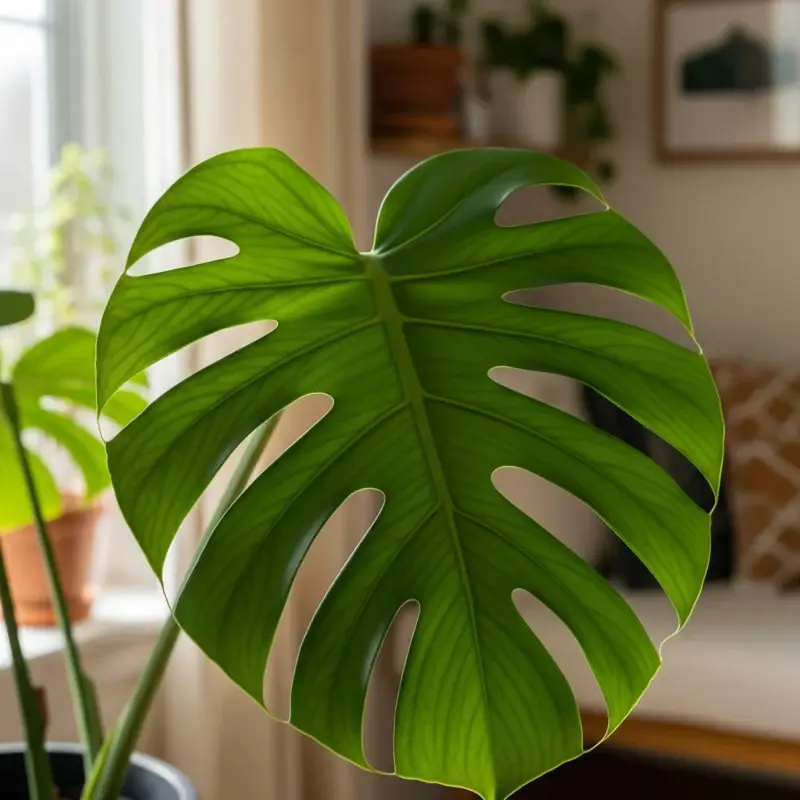The Ultimate Monstera Care Guide: From Beginner to Pro (Australia & Canada)
Hello, budding and seasoned plant parents in Australia and Canada! Few houseplants capture our imagination quite like the Monstera. With its iconic, deeply-split leaves and lush, tropical presence, the Monstera Deliciosa (often nicknamed the “Swiss Cheese Plant”) is a true statement piece that can turn any corner into a green oasis.
But what happens when those beautiful leaves start to droop or turn yellow? The journey from a small, vibrant plant to a sprawling, majestic beast can seem daunting. That’s why we’ve created the ultimate Monstera care guide! This comprehensive resource will simplify everything you need to know about Monstera plant care, from the basics to advanced tips, so you can confidently grow a healthy and thriving plant. Let’s make you a Monstera master!
The Monstera is famous for its large, glossy leaves with unique splits (fenestrations) that develop as the plant matures. It’s a fantastic choice for both beginners and experienced gardeners alike because it is relatively forgiving and its visual rewards are immense. Understanding the fundamentals of how to care for a Monstera is your first step toward cultivating this tropical beauty.
- Why It’s a Great Houseplant: It’s an air purifier, grows quickly, and adds a stunning, architectural element to your home decor.
- Our Promise: This guide is designed to answer all your questions, whether you’re dealing with a brand new plant or troubleshooting an old friend. I’ve learned from my own trial and error with my Monstera in Brisbane, and I’m here to save you from making the same mistakes!
Monstera Care 101: The Essential Needs of a Happy Plant
1. Light: How to Find the Perfect Spot
- The “Why”: Light is how your Monstera makes food. The right amount of light is crucial for producing those famous split leaves.
- The “How”: Place your Monstera in a spot with bright, indirect light. Think a few feet away from a sunny window, or in a room with large windows but no direct sunbeams hitting the leaves.
- What to Avoid: Direct, harsh sunlight will scorch the leaves and cause yellow or brown spots. Too little light will result in slow growth and a lack of fenestrations. (Source: Gardening Australia – Monstera Care)
2. Watering: The Goldilocks Zone
- The “Why”: Overwatering is the biggest killer of Monsteras. They prefer to dry out between waterings.
- The “How”: Water your Monstera thoroughly when the top 2-3 inches (5-8cm) of soil are completely dry. The “finger test” is your best friend: stick your finger into the soil. If it’s dry, it’s time!
- What to Avoid: Do not let your plant sit in soggy soil, as this will lead to root rot. If you’re a beginner, less is always more. (Internal Link: How to Water Your Houseplants: A Beginner’s Guide to Thriving Plants)
3. Soil & Potting: Creating a Solid Foundation
- The “Why”: Monsteras need a well-draining soil mix that allows air to get to the roots and prevents water from becoming stagnant.
- The “How”: Use a chunky, aerated potting mix. A great mix includes equal parts indoor potting soil, orchid bark, and perlite. This is a crucial step in proper monstera plant care.
- Potting Size: Only repot when your Monstera is root-bound (roots are growing out of the drainage holes). Choose a pot that is only 1-2 inches larger than the current one.
- What to Avoid: Do not use heavy garden soil. Avoid putting your Monstera in a pot that is too large, as this can lead to overwatering. (Source: The Spruce – Monstera Soil)
4. Temperature & Humidity: Their Ideal Climate
- The “Why”: Monsteras are tropical plants and love warmth and humidity.
- The “How”: They thrive in temperatures between 18-29°C (65-85°F). For humidity, you can mist the leaves regularly, group it with other plants, or use a humidifier.
- What to Avoid: Keep your Monstera away from cold drafts, air conditioning vents, and sudden temperature changes. This is especially important in Canada’s colder months!
5. Fertilizing: The Nutrients for Growth
- The “Why”: Monsteras are fast growers and need nutrients to fuel their growth, especially during the spring and summer.
- The “How”: Fertilize every 2-4 weeks during the growing season (spring and summer) with a balanced liquid houseplant fertilizer, diluted to half-strength.
- What to Avoid: Do not fertilize in the fall or winter when the plant’s growth slows down. Over-fertilizing can burn the roots. (Source: Royal Horticultural Society – Houseplant Fertilizing)

Beyond the Basics: Advanced Monstera Care for Thriving Growth
Once you’ve mastered the fundamentals, these advanced tips will help your Monstera truly flourish. This is where your monstera care guide goes from good to great.
Pruning & Staking: Taming Your Tropical Beast
- Pruning: Prune your Monstera to control its size and shape, and to encourage bushier growth. Use clean, sharp scissors to cut just above a node (where a leaf grows from the stem).
- Staking: Monsteras are vining plants and will grow aerial roots to climb. Providing a moss pole or a trellis gives it support, encouraging larger leaf growth and fenestrations. (Source: Plant Care Today – How to Stake a Monstera)
Pro Tip: A moss pole is a game-changer! My Monstera started growing much larger leaves with deeper splits once I gave it something to climb in my Melbourne home.
Propagation: How to Grow More Monsteras from Cuttings
- The “Why”: Propagation is a fun, free way to get new plants or share them with friends.
- The “How”:
- Choose a healthy stem with at least one leaf and one node (a small bump where roots will grow).
- Cut the stem about an inch below the node.
- Place the cutting in a jar of water, making sure the node is submerged.
- Change the water every few days. You should see roots grow in a few weeks.
- Once the roots are a few inches long, plant your new Monstera in a pot with a good soil mix!
- Best Use: Sharing with friends or growing your collection!

Troubleshooting Your Monstera: Common Problems & Solutions
Even with the best Monstera plant care, problems can arise. Here’s a quick guide to decoding what your plant is telling you.
Why are my Monstera leaves turning yellow?
- Most Common Cause: Overwatering. The plant’s roots are suffocating.
- Solution: Let the soil dry out completely before your next watering. Check for root rot.
Why are my Monstera leaves turning brown?
- Most Common Cause: Underwatering or low humidity. Brown, crispy tips are a classic sign of dry air.
- Solution: Increase watering frequency slightly and boost humidity around the plant (e.g., misting, humidifier).
Why are the leaves on my Monstera not splitting?
- Most Common Cause: Lack of light or maturity. Fenestrations (splits) primarily occur in mature plants and with adequate light.
- Solution: Move your plant to a brighter spot with more indirect light. Be patient; younger plants will develop their splits over time. (Source: The Spruce – Monstera Fenestrations)

Monstera Care Q&A: Your Top Questions Answered
Is a Monstera plant toxic to cats and dogs?
Yes, Monstera Deliciosa is toxic to cats and dogs if ingested. Its sap contains calcium oxalate crystals that can cause irritation in the mouth and digestive tract. Keep your Monstera in a location where your pets cannot easily reach it, or consider a different pet-friendly plant. Source: [ASPCA – Monstera Toxicity]
How do I know when my Monstera needs to be repotted?
Your Monstera is ready for a new pot when you see its roots growing out of the drainage holes or circling the bottom of the pot. A good rule of thumb is to repot every 1-2 years during the spring or summer growing season.
Why are my Monstera’s aerial roots growing everywhere?
Aerial roots are a natural part of Monstera plant care and growth. They are the plant’s way of seeking support to climb and absorb moisture from the air. You can gently guide them to a moss pole for support or simply trim them back if they become unruly, as this will not harm the plant.
How can I clean my Monstera leaves?
Cleaning your Monstera’s leaves is an important part of Monstera care guide maintenance. Dust can accumulate and block sunlight. Simply use a soft, damp cloth to gently wipe each leaf clean every few weeks. This helps your plant photosynthesize and look its best.
Conclusion: Ready to Become a Monstera Master?
With this ultimate Monstera care guide, you have all the knowledge you need to confidently nurture this stunning plant. From understanding its basic needs to solving common problems and even propagating new ones, your journey from a beginner to a Monstera master is well within reach.
Embrace the joy of seeing your Monstera flourish, and let its tropical presence bring a sense of peace and life to your home in Australia or Canada.
What is the one Monstera care tip you found most helpful in this guide? Share your thoughts and questions in the comments below!



Pingback: 15+Pet-Friendly Indoor Plants: A Guide to a Safe Home (AU/CA) - zenplanttherapy